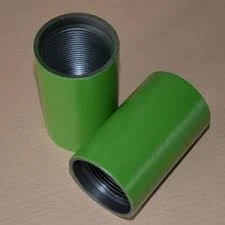- Afrikaans
- Albanian
- Amharic
- Arabic
- Armenian
- Azerbaijani
- Basque
- Belarusian
- Bengali
- Bosnian
- Bulgarian
- Catalan
- Cebuano
- Corsican
- Croatian
- Czech
- Danish
- Dutch
- English
- Esperanto
- Estonian
- Finnish
- French
- Frisian
- Galician
- Georgian
- German
- Greek
- Gujarati
- Haitian Creole
- hausa
- hawaiian
- Hebrew
- Hindi
- Miao
- Hungarian
- Icelandic
- igbo
- Indonesian
- irish
- Italian
- Japanese
- Javanese
- Kannada
- kazakh
- Khmer
- Rwandese
- Korean
- Kurdish
- Kyrgyz
- Lao
- Latin
- Latvian
- Lithuanian
- Luxembourgish
- Macedonian
- Malgashi
- Malay
- Malayalam
- Maltese
- Maori
- Marathi
- Mongolian
- Myanmar
- Nepali
- Norwegian
- Norwegian
- Occitan
- Pashto
- Persian
- Polish
- Portuguese
- Punjabi
- Romanian
- Russian
- Samoan
- Scottish Gaelic
- Serbian
- Sesotho
- Shona
- Sindhi
- Sinhala
- Slovak
- Slovenian
- Somali
- Spanish
- Sundanese
- Swahili
- Swedish
- Tagalog
- Tajik
- Tamil
- Tatar
- Telugu
- Thai
- Turkish
- Turkmen
- Ukrainian
- Urdu
- Uighur
- Uzbek
- Vietnamese
- Welsh
- Bantu
- Yiddish
- Yoruba
- Zulu
Stainless Steel Reducer Coupling for Efficient Fluid Transfer and Versatile Connections
Understanding Stainless Steel Reducer Couplings A Comprehensive Guide
Stainless steel reducer couplings are essential components used in piping systems to connect two pipes of different diameters. These couplings serve to facilitate the flow of liquids, gases, and slurries while ensuring a secure and leak-proof connection. With their impressive strength and resistance to corrosion, stainless steel reducer couplings are widely employed across various industries, including oil and gas, water treatment, food processing, and HVAC systems.
The primary function of a reducer coupling is to transition from a larger pipe to a smaller one, allowing for a gradual reduction in pipe diameter. This design minimizes turbulence and maintains pressure throughout the system, which is crucial for optimizing performance and efficiency. For instance, in a water distribution system where different pipe sizes are necessary, a stainless steel reducer coupling enables a seamless transition that prevents potential leaks or ruptures.
One of the significant advantages of using stainless steel as a material for reducer couplings is its exceptional corrosion resistance. Unlike other materials, stainless steel can withstand harsh environmental conditions and exposure to various chemicals, making it ideal for both indoor and outdoor applications. Additionally, stainless steel has high tensile strength, ensuring that the couplings can endure high pressure and temperature variations without compromising their integrity.
stainless steel reducer coupling

When selecting stainless steel reducer couplings, it's important to consider several factors. The coupling must be compatible with the pipe material, and the correct size should be chosen based on the specific application requirements. Additionally, various grades of stainless steel, such as 304 and 316, offer different levels of corrosion resistance and durability. For example, 316 stainless steel is preferred in marine environments due to its enhanced resistance to saltwater corrosion.
Installation of stainless steel reducer couplings is relatively straightforward, but it requires attention to detail to ensure a proper fit. It’s crucial to follow the manufacturer’s guidelines and utilize the appropriate tools to achieve a secure connection. Furthermore, regular inspection and maintenance can prolong the lifespan of the couplings and the overall piping system.
In conclusion, stainless steel reducer couplings play a vital role in the functionality and efficiency of piping systems. Their ability to connect pipes of different sizes while providing durability and resistance to corrosion makes them a preferred choice in a wide array of industries. Understanding their characteristics, applications, and installation procedures is essential for anyone involved in the design or maintenance of piping systems. By leveraging the benefits of stainless steel reducer couplings, industries can ensure reliable and efficient operations.
-
Tubing Pup Joints: Essential Components for Oil and Gas OperationsNewsJul.10,2025
-
Pup Joints: Essential Components for Reliable Drilling OperationsNewsJul.10,2025
-
Pipe Couplings: Connecting Your World EfficientlyNewsJul.10,2025
-
Mastering Oilfield Operations with Quality Tubing and CasingNewsJul.10,2025
-
High-Quality Casing Couplings for Every NeedNewsJul.10,2025
-
Boost Your Drilling Efficiency with Premium Crossover Tools & Seating NipplesNewsJul.10,2025







